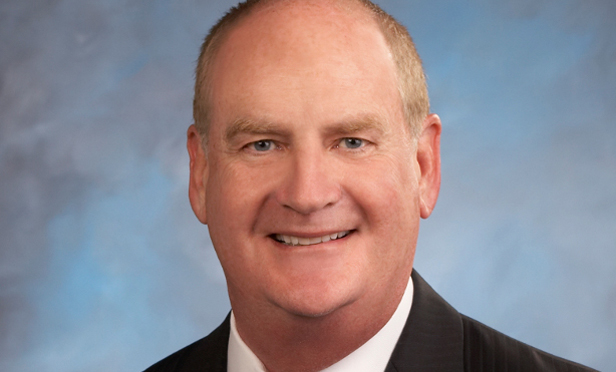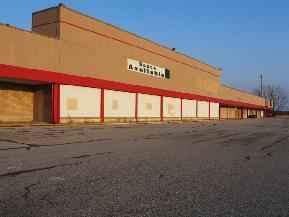 Peterson: “You really have to pay attention to who is struggling and who is winning when there are three or four competitors in a space.”
Peterson: “You really have to pay attention to who is struggling and who is winning when there are three or four competitors in a space.”
LOS ANGELES—For commercial real estate, the revolution has arrived—and the retail sector is no exception. With e-commerce driving major changes in the sector, investors are learning to quickly adapt to the new needs of retailers. According to Bob Peterson, VP of investments at Passco, a company that has been thriving in the retail market since its inception in 1998, today’s retailers are looking for strong traffic and sales volume, not the lowest rents. To get his take on the new retail market, including the major trends to watch, where to find opportunities and when to be cautious, we sat down with Peterson for an exclusive interview. Here, he breaks down the retail market today, and what is on the horizon.
GlobeSt.com: Retailers are being required to adapt to a changing landscape at a faster pace than ever before. As a retail owner, what changes are you seeing, and how is Passco adapting?
Bob Peterson: We are seeing change in five different areas. Firstly, and probably foremost in everyone’s mind is e-commerce. It is here and it is growing, and the result is smaller brick and mortar footprints in the actual centers, and larger distribution centers in close proximity to consumers. For example, here in Southern California, a tenant will have a million-square-foot distribution center in the Inland Empire, and then the same tenant will have a regional distribution closer to consumers. Retailers are adopting an omni-channel approach, which also provides for an ease of return. E-commerce is here and it is growing, and it is affecting everyone in the retail landscape.
Secondly, you are seeing some significant store closures or reductions in the number of stores. Some names to mention would be Macy’s, Sports Authority, Sports Chalet, Fresh and Easy and Haggen in the grocery sector, some smaller Walmart concept stores, Sears, and it goes on and on; so, you really have to pay attention to who is struggling and who is winning when there are three or four competitors in a space.
The next trend we are seeing is experiential real estate, and from our perspective, shopping has turned into a sport. It is a way of life; it is what people do on the weekends. They work a lot of their free time around shopping and dining, and retail owners that can combine dining and shopping to create an experience are going to do the best over the next several years.
We are also seeing that there is significant capital out there chasing deals. The volume of deals from foreign capital doubled in 2015; private capital is being very aggressive, especially those coming out of 1031 exchanges; and much of the institutional capital is underweighted in retail, and you are seeing them try to fill up the retail bucket.
Lastly, I am seeing a flight to quality, both on the tenant side and on the capital side. The capital is really looking for the best quality centers in the best markets, and the same thing with tenants. Tenants are looking for the center where there is the best traffic and the best visibility. They are not as interested in second- and third-tier centers, because it isn’t about rent; it is about traffic and sale volume.
GlobeSt.com: We continue to see strong national retailers going out of business. Does this activity translate into new opportunity for retail owners, or should owners be proceeding with caution?
Peterson: There are two sides to the coin. There is quite a lot of reason to be cautious with these closures, but there is some opportunity in the right situation. I will say that we aren’t big fans of big box retail, and we tend to stay away from it. What really concerns us is the single-occurrence risk. If you look at a big box center, there might be four-to-six large retailers, and if you lose one of those tenants, the cash flow goes down significantly and the loan potentially goes into default because there is a very short list of replacement tenants. We prefer the grocery-anchored center with necessity-type shop space that is more Internet resistant. That way, there is lower single-occurrence risk when you have multiple smaller tenants. There are opportunities, however, when a big box is vacated. For example, Macy’s is leaving the Irvine Spectrum Center. That would normally be a big hole, and if that were to occur in a B- or C mall in a lesser market, it would be devastating to that center. However, the Irvine Co. [the owner of the Irvine Spectrum Center] sees it as a great opportunity because Macy’s wasn’t doing big volume down there. They are going to tear down the big box and turn it into more experiential space. That will be a big plus for them.
Another opportunity that we are seeing is in centers where the grocery anchors have vacated. In many areas in Southern California, you can back-fill the center with an ethnic grocer that would cater to the demographic in that area. So, there are both opportunities as well as reasons to be cautious when you are looking at these types of closures.
GlobeSt.com: Passco has invested in retail since the firm’s inception in 1998. How do current retail shifts affect Passco’s investment strategy? Has your investment criteria in this sector changed?
Peterson: The company has always believed that there are good quality centers that we would like to own in many markets, including primary, secondary and tertiary markets. There are usually excellent quality centers at the best corner, and we would love to own many of those across the country. Much of it, though, depends on the capital that you are representing. We have capital that pursues stabilized core deals, and on the flip side of that, we have capital that pursues value-add opportunities. Additionally, we have capital that prefers primary markets and capital that prefers secondary markets. It really comes down to the capital and what their motivation is. For example, in Southern California, we have investors that are primarily focused on neighborhood grocery anchored centers, and they are willing to pay lower cap rates for what they perceive as lower risk. We have other capital that prefers a high yield and is willing to take a little bigger risk by going into secondary and tertiary markets. We can look all across the country. It is really important to do very strong due diligence and make sure you customize your underwriting and understand the risks associated with each of the different areas. As long as the spread is appropriate, we will go into most markets, and we have capital that is interested in all of those deals.
GlobeSt.com: What is Passco’s view of retail moving forward? Where are the opportunities?
Peterson: You have to be fairly cautious. Pricing is fairly aggressive today in the market, and as I mentioned earlier, there is a flight to quality for both capital and for tenants, so from our perspective, we believe that the best quality centers in the best markets will flourish and will be able to push rents. The second-tier centers will struggle and the third-tier centers will either die if they are not reinvented or they will be converted into a higher and better use, like multifamily. You are seeing that in areas where a retail center has struggled and apartments are being built. For tenants, it is all about traffic and sales volume. It is not about the rent that they pay.
We are very focused on the best quality center in a market and making sure that center is positioned to flourish over the next 10 to 20 years, and we are steering away from second- and third-tier centers. As I mentioned, we are steering away from big box because of what we have seen with consolidation and the downsizing of some of these companies, and we are definitely steering away from B- and C-tier malls.
We see the opportunity for us in grocery-anchored centers in the best locations with necessity shops that provide no single-occurrence risk, and we see opportunities in experiential lifestyle centers.

















 Copyright © 2024 ALM Global, LLC. All Rights Reserved.
Copyright © 2024 ALM Global, LLC. All Rights Reserved.